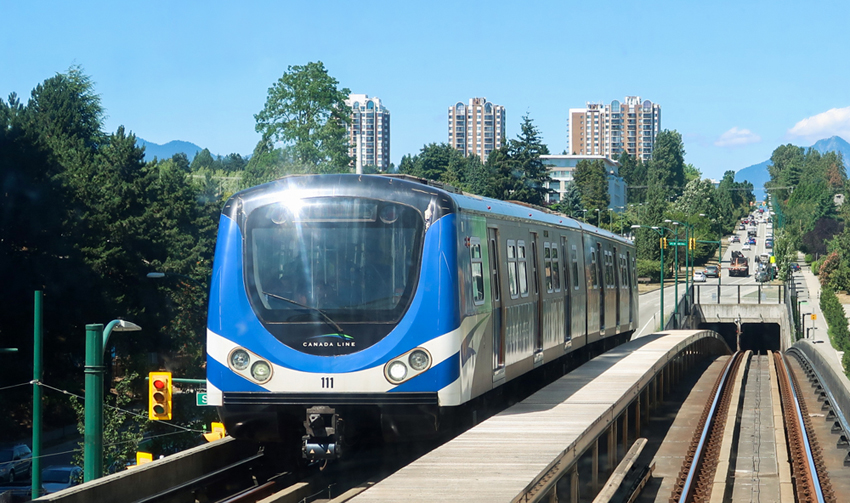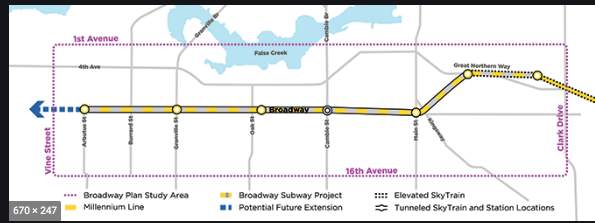
Mar 11, 2021: Broadway Plan & transit-oriented development
Rezoning, densification, new jobs, affordable housing in addition to wider sidewalks and green space, is what the City of Vancouver envisions for the stretch of Broadway that follows the coming subway line through the Mt. Pleasant, Fairview and Kitsilano neighbourhoods. The Broadway Plan is being justified by the subway (completion date 2025), that will replace the 99 B-Line route.
The area involved doesn’t only cover Broadway from Clarke Dr. to Arbutus St., but a 15-block swath from West 1st to 16th Ave. including Vine Street. For now the City is calling it a “Broadway Plan Study Area.” This part of Kitsilano contains many character and heritage homes, low-cost apartments and secondary suites. See map below.
Although the City has not revealed what will become of the area west of Vine, we should expect the subway to continue once funding is secured for the estimated $4-$6 billion UBC subway extension. In Upper Kitsilano, the City is already considering densifying along arterials and non-arterials with taller buildings and family housing under the province’s rental tenure zoning. One need only look to the coming 14-storey (equivalent to 17 storeys due to high ceilings), 161-unit Alma Tower at the corner of Broadway and Alma as evidence.
The City has endorsed transit-oriented development (TOD) for years, beginning with the 19.2 km Canada Line Subway in 2009. Now in Phase 3 of the Cambie Corridor 30-year-plan, developers can apply to build towers of up to 18 storeys on side streets near the subway.
The City is moving full steam ahead on TOD with little idea of how many future homes will actually be needed in Vancouver. Cllr. Colleen Hardwick asked City staff last year why the Vancouver Housing Plan calls for almost three times as many units as StatsCanada has forecasted but says she has yet to receive any “real data.” Many doubt, meanwhile, that new housing development along the subway will meet the City’s goal of increasing affordability as it will inevitably lead to spikes in land value.
A 2015 study of transit-oriented development in Burnaby, by University of Toronto Professor Craig Jones, concluded that “policies to encourage TOD have reduced the stock of affordable rental housing in Burnaby, and high density residential redevelopment has introduced housing that many pre-gentrification residents could not hope to afford.”
Rather than increasing new opportunities for renters and businesses, the Broadway plan may well encourage displacement of both homeowners and renters, and threaten the loss of neighbourhood history, affordability and character. Please tell the City we don’t want this plan for our neighbourhood.
For more information, read Why TOD is an incomplete idea in Metro Vancouver.




No Comments